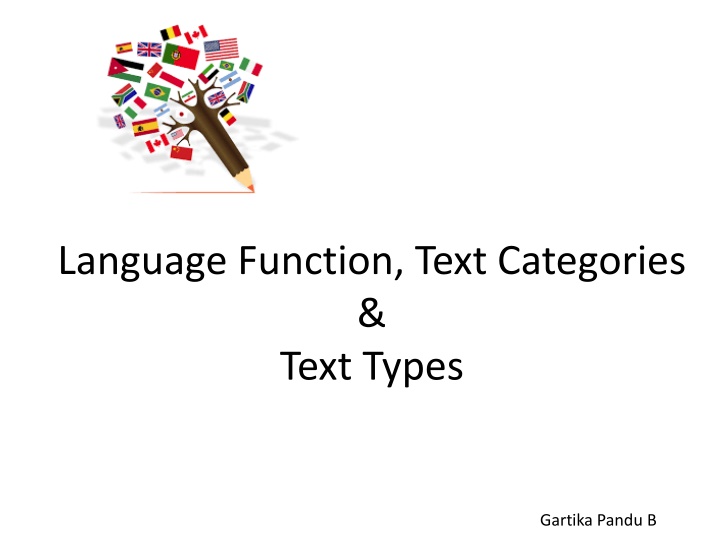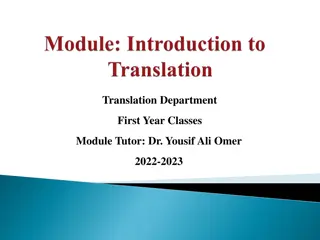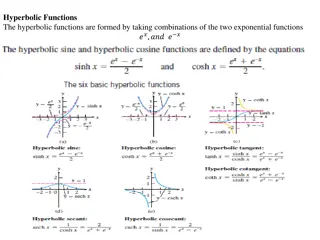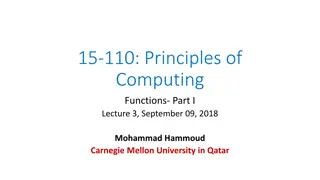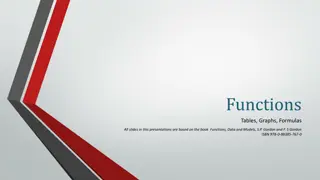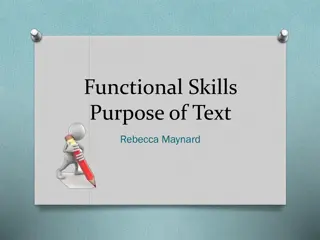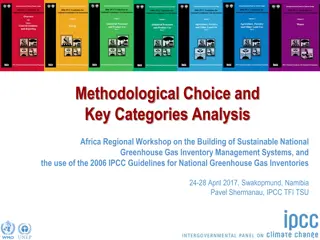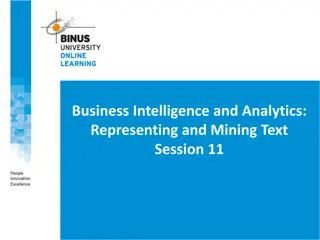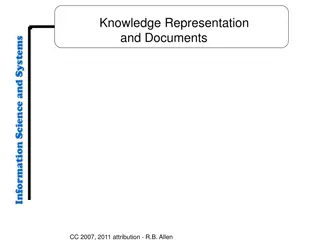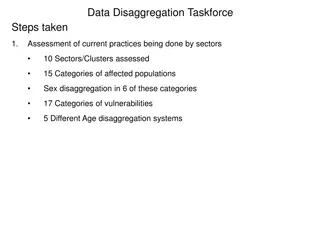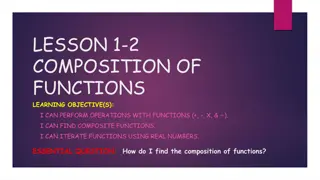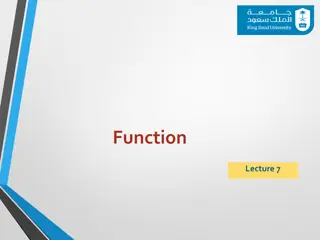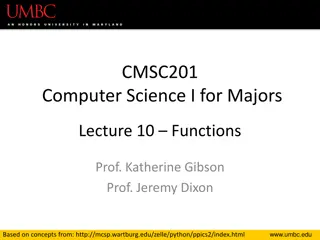Language Functions, Categories, and Text Types
Explore the three main functions of language - Expressive, Informative, and Vocative - along with their characteristics and examples. Delve into language functions, text categories, and text types such as serious imaginative literature, authoritative statements, and vocative texts. Discover how language serves as a powerful tool in expressing thoughts, conveying information, and influencing readership.
Download Presentation

Please find below an Image/Link to download the presentation.
The content on the website is provided AS IS for your information and personal use only. It may not be sold, licensed, or shared on other websites without obtaining consent from the author.If you encounter any issues during the download, it is possible that the publisher has removed the file from their server.
You are allowed to download the files provided on this website for personal or commercial use, subject to the condition that they are used lawfully. All files are the property of their respective owners.
The content on the website is provided AS IS for your information and personal use only. It may not be sold, licensed, or shared on other websites without obtaining consent from the author.
E N D
Presentation Transcript
Language Function, Text Categories & Text Types Gartika Pandu B
Three main function of language: Expressive function Deals with the mind of the speaker, the writer, the originator of the utterance. Characteristics: Serious imaginative literature : Poetry, short-stories, novels, plays etc. Authoritative statements : Political statements, speeches, documents, legal documents, academic works, etc. constitute this text-type. Autobiography, essays, personal correspondence,
Three main functions of language: Informative Function These texts are intended to convey the truth and to keep their readers well-informed Tend to use standard, non-regional, non-class, non-dialectal language with four of these following language varieties: 1. Formal, non-emotive technical style (passive, present and perfect tense literal language jargon, no metaphors) 2. A neutral or informal styles with defined technical term (first person plural, present tense, active verb, basic conceptual metaphor) 3. An informal, warm style for popular science or art books (simple grammatical structure, wide range of vocabularies, simple vocabularies, numerous illustration, and stock metaphor) 4. A familiar, racy, non-technical style for popular journalism (surprising metaphor short sentence unconventional punctuation, colloquialism) All types of fact-oriented, scientific and knowledge-based, such as text-books, reports, research reports, academic articles, scientific literature
Three main function of language: Vocative Function The readership or the addressee is central. Vocative texts usually try to impress upon their readership to act, think, feel and react in the way intended by the text. Important factors in vocative text: 1. The relationship between the writer and the readership (subjunctive, indicatives, passives, family names, etc) 2. Text must be written in a language that is immediately comprehensible to the readership. Notices, propaganda and publicity materials, instructions as well as advertisements etc
Language functions, Text-categories and Text-types Function Core Autor's Status Expressive Writer Scared Informative 'Truth' 'Anonymous Vocative Readership Anonymous Notices, Propaganda, Instruction, Publicity, Popular fiction Topic Scientific, Technological, Formal Text-Book, Report, Paper, Memorandum, Minutes, Type Serious Imaginative, Literature, Authoritative, Statements, Autobiography, Personal, Correspondence Commercial , Industrial, Economic. Other areas Of knowledge Or events
OTHER FUNCTIONS The Aesthetic Function The Phatic Function It involves in part of text The language designed to please The speaker intends to establish an our senses and appeal to our intimate and friendly relationship with attitudes through the addressee. sounds,metaphors, similes, It occurs in the standard phrases onomatopoeia, alliteration, metre, (phaticism), such as 'How are you? , rhyme, etc. 'You know', 'Are you well?', 'See you Beauty precedes the truth. tomorrow' We can regard aesthetic function as In written, it uses to win the a part of expressive function of confidence of the readership, such as language 'naturally' ,'of course', 'it is important Poetry, nursery rhymes, advertising to note that' etc. material etc.
OTHER FUNCTIONS The Metalingual Function It involves in part of text Language has an ability to explain or criticize its own features and functions. In other words, language can speak about itself. The expressions such as 'strictly speaking',' in the true sense of the word','so- called','literally','so to speak', etc. are either intended to criticize certain expression in language or to clarify them. When it is universal (sentence, grammar, verb), there will no translation problem If it is specific language, they have to be translated in accordance with the various relevant contextual factor (nature of readership, recurrences in TL, importance item of Sl)
